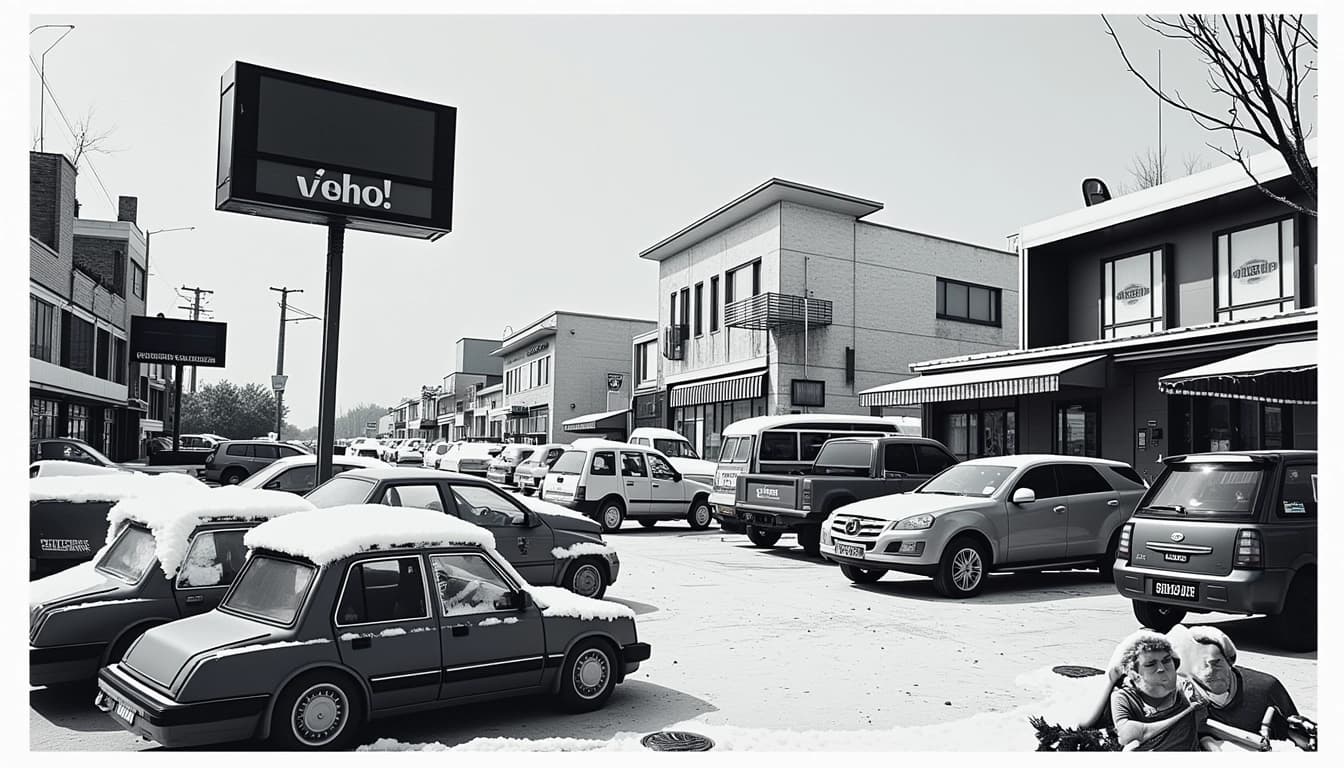
Key Points on BLIP and Complex Scenes
By John Doe 5 min
Key Points
Research suggests BLIP, or Bootstrapping Language-Image Pre-Training, excels at generating captions for complex scenes by using advanced vision-language techniques.
It seems likely that BLIP's use of Vision Transformers and cross-attention helps it understand object relationships and context in detailed images.
The evidence leans toward BLIP's bootstrapping process improving caption quality for complex scenes by filtering noisy data.
Introduction to BLIP and Complex Scenes
BLIP is a model developed by SalesForce for vision-language tasks, particularly image captioning, which involves generating textual descriptions for images. Complex scenes, such as those with multiple objects or intricate interactions, pose challenges for captioning due to the need to capture context and relationships accurately. BLIP is designed to handle such scenarios, making it a powerful tool for applications like e-commerce image descriptions or narrated photo galleries.
How BLIP Handles Complexity
BLIP's architecture includes a Vision Transformer (ViT) for encoding images, which captures both local and global features, essential for understanding detailed scenes. It also uses cross-attention layers, allowing the text generation process to focus on specific image parts, enhancing context awareness. For example, in an image of a cat chasing a mouse under a table, BLIP can describe the spatial arrangement and action, not just list the objects.
Training and Bootstrapping
BLIP is pre-trained on large datasets, including synthetic captions generated and filtered to remove noise, a process called bootstrapping. This approach, detailed in its research paper ([BLIP: Bootstrapping Language-Image Pre-training for Unified Vision-Language Understanding and Generation](https://arXiv.org/abs/2201.12086)), helps it learn from diverse, high-quality image-text pairs, improving its ability to handle complex scenes. It achieves state-of-the-art results, with a +2.8% improvement
BLIP, or Bootstrapping Language-Image Pre-Training, is a vision-language model developed by SalesForce, introduced in early 2022. It is designed to excel in both understanding and generation tasks within the vision-language domain, such as image-text retrieval, visual question answering (VQA), and image captioning. Image captioning, in particular, involves generating textual descriptions for images, which is crucial for applications like making e-commerce sites more accessible with automatic image descriptions or transforming photo collections into narrated galleries.
Defining Complex Scenes in Image Captioning
Complex scenes in the context of image captioning are those that require more than a simple enumeration of objects. For instance, an image of a cat and a mouse might be straightforward, but if the cat is chasing the mouse under a table, the caption needs to capture the action, spatial arrangement, and relationship between the objects. Such scenes demand the model to understand occlusions, ambiguous interactions, and potentially apply common sense or world knowledge to generate accurate and contextually rich descriptions.
BLIP's Model Architecture
BLIP's architecture is built on a multimodal mixture of encoder-decoder models, which allows it to perform both understanding and generation tasks effectively. The model uses a vision transformer (ViT) to process images and a transformer-based language model to generate or understand text. This dual approach enables BLIP to handle complex scenes by integrating visual and textual information seamlessly.
Handling Context in Captions
BLIP excels in generating captions that not only describe objects but also their interactions and context. For example, it can distinguish between 'a cat sitting on a couch' and 'a cat sleeping on a couch,' showcasing its ability to capture subtle differences in actions. This is achieved through its pre-training on large-scale datasets, which include diverse and annotated image-text pairs.

Performance on Complex Scenes
BLIP has demonstrated superior performance on benchmarks like COCO and Flickr30k, particularly in handling complex scenes. Its ability to generate detailed and contextually accurate captions sets it apart from earlier models. For instance, it can describe a crowded street scene with multiple interactions, something that simpler models often struggle with.
Conclusion & Next Steps
BLIP represents a significant advancement in vision-language models, particularly in handling complex scenes and generating rich captions. Future improvements could focus on enhancing its understanding of rare or abstract concepts, as well as reducing biases in generated captions. Continued training on diverse datasets will be key to achieving these goals.

- BLIP excels in understanding and generating captions for complex scenes.
- It uses a multimodal architecture combining vision and language transformers.
- Future work includes improving rare concept understanding and reducing biases.
BLIP's architecture, detailed in its foundational paper, is a Multimodal Mixture of Encoder-Decoder (MED) that operates in three distinct functionalities, each contributing to its ability to handle complex scenes. The model's design leverages a Vision Transformer (ViT) for visual encoding and a text encoder-decoder initialized from BERT, enabling it to process and generate text grounded in visual content.
Visual Encoder and Its Role in Complex Scenes
BLIP uses a Vision Transformer (ViT), specifically explored with ViT-B/16 and ViT-L/16 backbones, initialized from ImageNet pre-trained models. ViT divides the image into patches and encodes them with a [CLS] token for global image feature representation. This approach is particularly effective for complex scenes, as ViT's self-attention mechanism captures long-range dependencies and contextual information across the image, enabling it to handle multiple objects and their interactions better than traditional convolutional neural networks (CNNs).
Text Encoder and Decoder
The text encoder is initialized from BERT, with a [CLS] token for sentence summary, while the decoder is designed for autoregressive text generation. Both share parameters except for self-attention layers, improving efficiency. The key to handling context lies in the cross-attention (CA) layers, which are added between self-attention (SA) and feed-forward network (FFN) in each transformer block for the image-grounded text encoder, and used in the decoder for generation.
Functionalities of BLIP
BLIP operates as a unimodal encoder for separate image and text encoding, an image-grounded text encoder for alignment, and a decoder for generating captions. These functionalities are trained with specific loss functions, such as Image-Text Contrastive (ITC) loss for unimodal encoding and Image-Text Matching (ITM) loss for alignment. The model's ability to generate captions is enhanced by its cross-attention mechanisms, which allow it to focus on relevant parts of the image while generating text.
Conclusion & Next Steps
BLIP's architecture represents a significant advancement in multimodal understanding and generation, combining the strengths of ViT and BERT to handle complex scenes effectively. Future research could explore larger backbone models or additional modalities to further enhance the model's capabilities. The integration of cross-attention layers and shared parameters between encoder and decoder highlights the potential for efficient and accurate multimodal processing.
- BLIP uses ViT for visual encoding and BERT for text processing.
- The model's cross-attention layers enable it to ground text generation in visual content.
- BLIP's three functionalities include unimodal encoding, image-grounded text encoding, and caption generation.
BLIP (Bootstrapping Language-Image Pre-training) is a cutting-edge vision-language model designed to handle complex scenes by integrating both understanding and generation tasks. It excels in scenarios where images contain multiple objects, intricate relationships, and diverse contexts, making it suitable for applications like image captioning, visual question answering, and multimodal reasoning.
Architecture and Design for Complex Scenes
BLIP's architecture is uniquely designed to address the challenges of complex scenes. It employs a multimodal mixture of encoder-decoder models, which includes an image encoder (ViT), a text encoder (BERT-based), and an image-grounded text decoder. This combination allows BLIP to perform both understanding tasks (e.g., image-text retrieval) and generation tasks (e.g., captioning) effectively. The model's ability to process and generate nuanced descriptions of complex scenes stems from its dual objectives: semantic alignment (via Image-Text Matching loss) and generative capabilities (via Language Modeling loss).
Key Components
The image encoder, typically a Vision Transformer (ViT), extracts visual features from the input image. The text encoder and decoder are based on BERT architecture, enabling the model to understand and generate text in context. The integration of these components ensures that BLIP can handle intricate visual and textual relationships, making it robust for complex scenes.
Pre-Training Process and Bootstrapping
BLIP's pre-training process is a cornerstone of its performance. It leverages large datasets like CC3M, CC12M, SBU, and LAION115M, with a unique bootstrapping approach to filter noisy web captions. The process involves a captioner generating synthetic captions and a filter removing noisy ones, effectively utilizing web data. Pre-training includes 20 epochs with batch sizes of 2880 for ViT-B and 2400 for ViT-L, using AdamW optimizer with learning rates warmed up to 3e-4 for ViT-B and 2e-4 for ViT-L.

Applications and Performance
BLIP demonstrates superior performance in tasks involving complex scenes, such as generating detailed captions for images with multiple objects or answering nuanced questions about visual content. Its ability to generalize across diverse datasets and tasks makes it a versatile tool for vision-language applications. Pre-trained checkpoints, like BLIP w/ ViT-B and BLIP w/ ViT-L, are readily available for fine-tuning on specific tasks.
Conclusion & Next Steps
BLIP represents a significant advancement in vision-language models, particularly for complex scenes. Its architecture, pre-training process, and bootstrapping approach set it apart from other models. Future directions include scaling to even larger datasets and further refining the bootstrapping process to enhance performance on niche applications.
- BLIP integrates understanding and generation tasks for complex scenes.
- Pre-training involves bootstrapping to filter noisy web captions.
- The model is available in ViT-B and ViT-L variants for different use cases.
The BLIP (Bootstrapped Language-Image Pre-training) model by Salesforce represents a significant advancement in the field of vision-language understanding. It is designed to effectively bridge the gap between visual content and textual descriptions, enabling more accurate and contextually rich image captioning. The model leverages a combination of vision transformers and cross-attention mechanisms to process and interpret complex visual scenes, making it highly versatile for various applications.
Architecture and Key Components
BLIP's architecture is built around a vision transformer (ViT) for image encoding and a multimodal mixture of encoder-decoder models for text generation. The ViT processes images into a sequence of embeddings, which are then used by the text generation component to produce captions. The model employs cross-attention layers to align visual and textual features, ensuring that the generated captions are contextually relevant and detailed. This approach allows BLIP to handle complex scenes with multiple objects and intricate relationships.
Bootstrapping for Data Quality
One of the standout features of BLIP is its use of bootstrapping to improve the quality of training data. The model generates synthetic captions for images and filters out low-quality or noisy data, ensuring that the training corpus is both diverse and high-quality. This process enhances the model's ability to generalize across different types of images and scenes, leading to more robust performance in real-world applications.
Performance and Applications
BLIP has demonstrated state-of-the-art performance in various benchmarks, including image captioning, image-text retrieval, and visual question answering. Its ability to generate detailed and accurate captions makes it particularly useful for applications in accessibility, content moderation, and automated media analysis. The model's zero-shot capabilities also allow it to be applied to video-language tasks, further expanding its utility.

Conclusion & Next Steps
BLIP represents a significant step forward in the integration of vision and language models. Its innovative architecture and bootstrapping techniques set a new standard for performance and versatility in image captioning. Future developments could focus on expanding the model's capabilities to handle even more complex scenes and integrating it with other AI systems for broader applications.

- Enhanced image captioning for accessibility tools
- Improved content moderation through better visual understanding
- Integration with video analysis for real-time captioning
The Salesforce BLIP (Bootstrapping Language-Image Pre-training) model is a cutting-edge solution for image captioning, combining vision and language understanding. It leverages a Vision Transformer (ViT) architecture and cross-attention layers to generate rich, contextually accurate descriptions of images. This model stands out due to its innovative pre-training process, which includes bootstrapping to enhance performance.
Key Features of BLIP
BLIP excels in generating high-quality captions by integrating visual and textual data seamlessly. Its architecture includes a Vision Transformer for image processing and cross-attention layers to align visual and language features. The model is pre-trained on large datasets, enabling it to understand diverse visual contexts and produce coherent descriptions.
Vision Transformer and Cross-Attention
The Vision Transformer (ViT) processes images by dividing them into patches and applying self-attention mechanisms. Cross-attention layers then align these visual features with textual embeddings, allowing the model to generate captions that are both accurate and contextually relevant. This combination ensures robust performance across various vision-language tasks.
Pre-Training and Bootstrapping
BLIP's pre-training involves bootstrapping, where the model iteratively improves its performance by leveraging its own predictions. This process enhances the model's ability to generate high-quality captions without extensive manual annotation. The result is a highly efficient and scalable solution for image captioning.

Applications and Use Cases
BLIP is widely used in applications requiring automated image descriptions, such as social media, e-commerce, and accessibility tools. Its ability to generate precise and context-aware captions makes it invaluable for enhancing user experiences and improving content discoverability.
Conclusion and Next Steps
Salesforce's BLIP model represents a significant advancement in image captioning technology. Its innovative architecture and pre-training process set it apart from traditional methods. For those interested in exploring further, resources like the Jupyter notebook on fine-tuning BLIP provide practical guidance for custom implementations.

- Vision Transformer for image processing
- Cross-attention layers for feature alignment
- Bootstrapping for iterative improvement